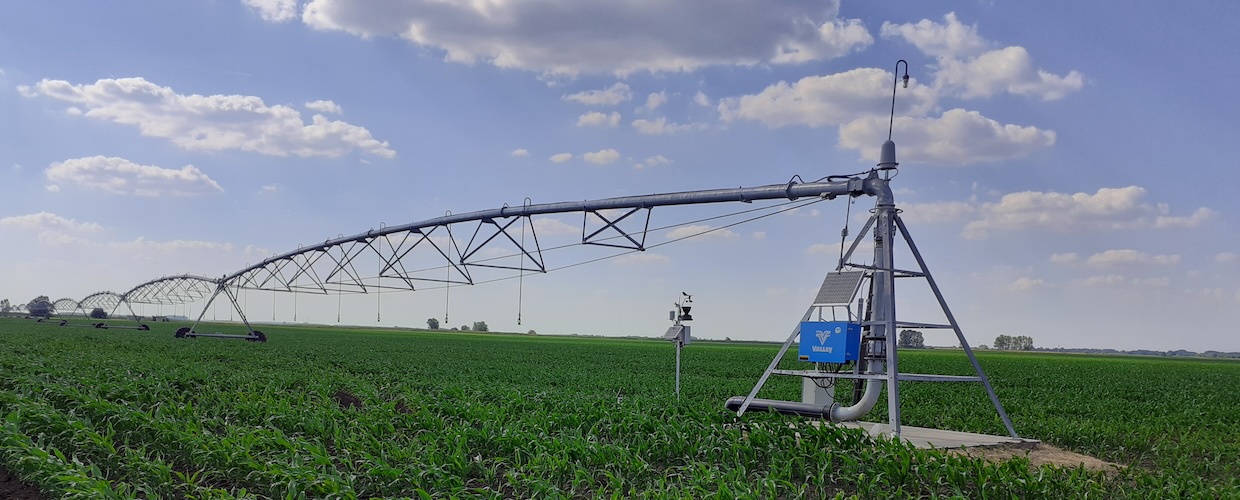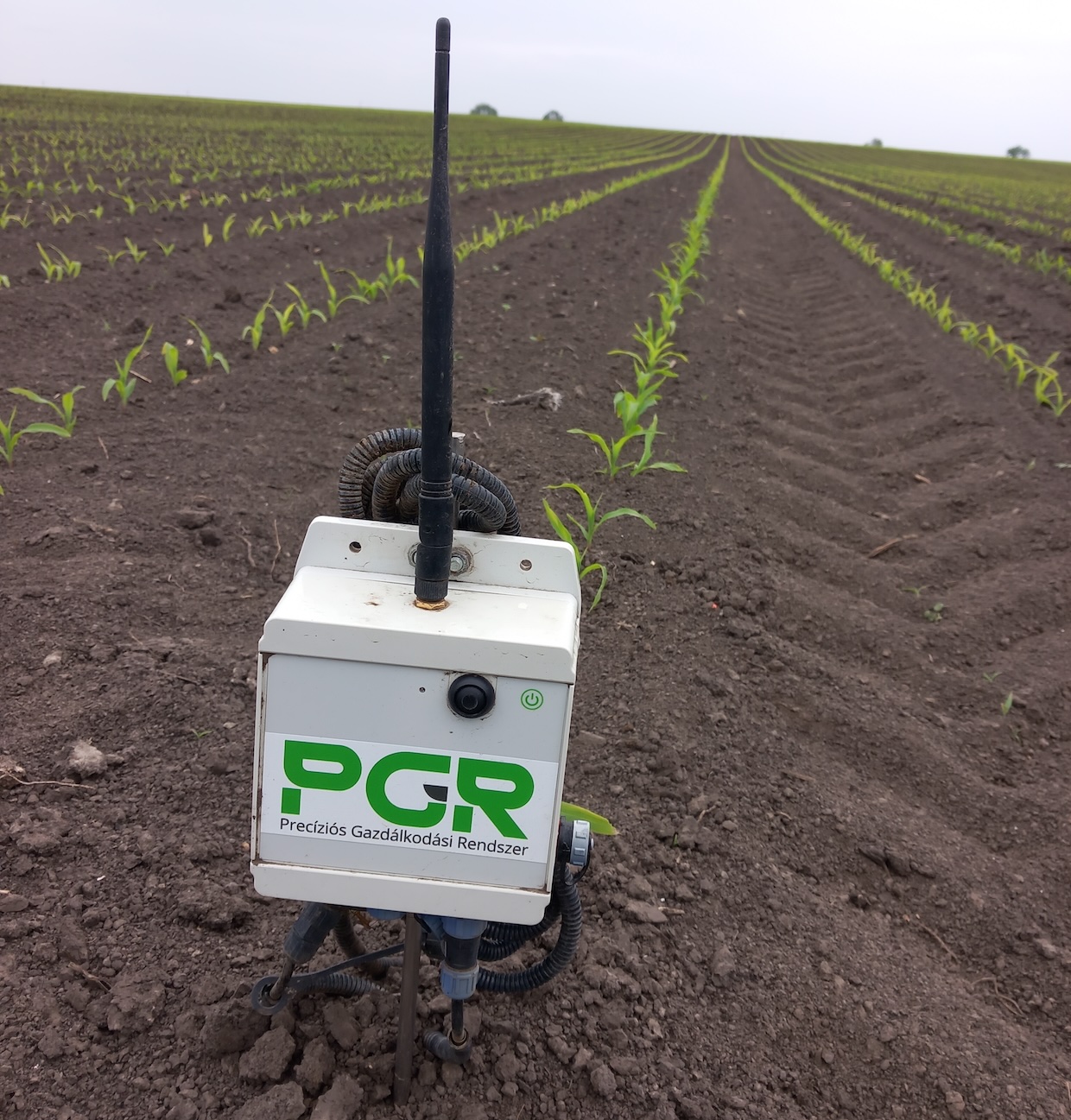
Based on the analysis of yield data from the past decades and the climate changes that have already occurred and those predicted by regional climate models, it can be concluded that the productivity of our arable land is expected to decrease and the rate of yield variability to increase in the coming decades, primarily due to the increasingly arid and extreme climate of the Carpathian Basin. To compensate for this, it is also necessary to conserve soil water resources and increase the proportion of irrigated land.
In order to eliminate the increasingly extreme climate and the resulting growth in crop yield fluctuations, professional, data-based and precise irrigation is becoming increasingly important, and this is something KITE’s irrigation advisory system can effectively provide for. The information resulting from atmospheric measurements gives a good indication of the changes in water resources. In addition, it is very important to know whether the soil moisture necessary for the plants is available in the root zone at any given time; this can be checked through continuous soil moisture measurements carried out in the plant population, as these provide direct information on the water supply of the plants and help to prevent water stress. The irrigation management decision-making support app helps farmers to make key irrigation scheduling decisions (irrigation rate, irrigation intervals and, if they have several irrigated fields, the priority order for starting the irrigation process) based on soil-plant-atmosphere data measured in the farmers’ irrigated area.
Improperly implemented irrigation can cause significant environmental damage and is also uneconomical, which is why KITE Zrt. is committed to supporting farmers’ technical decisions in this regard, in addition to providing the latest irrigation equipment. It provides them with the Irrigation Scheduling app developed in-house, which recommends the appropriate irrigation intervals and irrigation rate for a given field, plant species and variety, based on atmospheric parameters, soil moisture measurements and a 7-day forecast.
Our aim is to provide a system to support irrigation scheduling based on the processing of measured atmospheric and soil moisture data, according to plant and soil properties.
We can confidently assert that irrigation that is managed in accordance with the recommendations of our consultancy system meets the challenges of the modern age in both environmental and economic terms.
A meteorológiai állomások mérési eredményei bár önmagukban is támogathatják az agronómiai döntéshozatalt, az öntözésirányítás szempontjából még nem elég informatívak, további feldolgozásuk szükséges.
The atmospheric parameters – such as irradiance, temperature, wind speed and humidity – can be used to determine the “drying capacity” of the atmosphere, also known as potential evapotranspiration (ETo). The potential evapotranspiration value is useful for comparing the evaporation conditions of different areas, but it does not in itself provide sufficient information on the amount of water evaporated by a given crop and the amount of water evaporating from the soil surface in a given period, as this depends on the plant species and variety and on the phenology. Plant evapotranspiration (ETc), corrected for plant species, variety, and phenology, can now be used to estimate more accurately the water loss in a given period, so that the climatic water balance can be determined based on precipitation conditions, irrigation and irrigation efficiency. The climatic water balance shows whether the soil water resources are decreasing, increasing or flat between two specific dates. KITE's irrigation scheduling system not only provides water balances for the periods past, but shows the predicted water balance for the week following the run date, thanks to the integration of the seven-day national weather forecast (HungaroMet).

The information resulting from atmospheric measurements gives a good indication of the changes in water resources, but the water flux in the soil-plant-atmosphere system depends on so many factors that it alone cannot be used to determine whether the soil moisture needed by the plant is available in the root zone at a given time. However, measuring soil moisture and interpreting it in relation to soil texture and the sensitivity of the crop provides direct information on the water supply to the plant and can help prevent water stress. This can be illustrated in the “Soil moisture” function of the Irrigation Scheduling app.


Once we know the predicted climatic water balance and soil moisture levels, we are able to conduct irrigation planning and, if there are several irrigated fields, we can even set up a priority order using the water stress prediction icons.

Our related services
- PGR web and mobile access to the irrigation advisory app
- Data uploader app for uploading basic data to the consultancy platform
- Telephone and, if necessary, face-to-face support for basic data collection
- Irrigation plan for the current day plus 6 days
- Consultancy support hotline
- Personal consultation with a consultant during the irrigation season
- Provision of agro-meteorological station(s) for the measurement of atmospheric parameters as part of the service, on request
- Provision of soil moisture measuring instrument(s) for soil moisture measurement at 6 depths, as part of the service, on request
 magyar
magyar english
english serbian
serbian